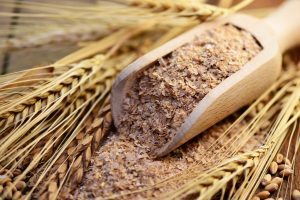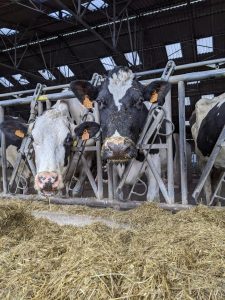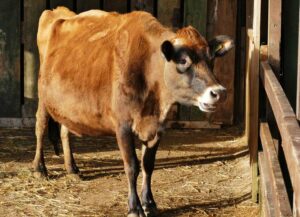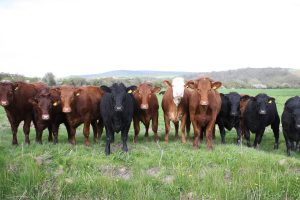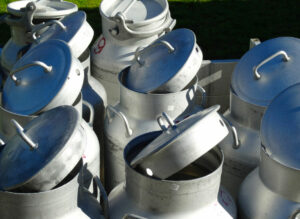Álvaro García
Whether you’re dairying in the arid heat of Saudi Arabia, the humid summers of Florida, or the stable but intense sun of central Israel, heat stress is unavoidable in many parts of the world. But how that stress manifests—and how producers deal with it—can differ dramatically.
In Israel, dairy cows are kept under open-sided shelters equipped with precision sprinklers and fan systems that activate automatically when THI rises. In Saudi Arabia, where summer temperatures can exceed 115°F (46°C), shade, mist cooling, and intensive water use are essential to keep Holstein cows productive. Meanwhile, in tropical regions like Central America or Southeast Asia, year-round heat and humidity require constant adaptation, often with limited infrastructure and access to advanced technologies.
Even in temperate climates like the U.S. Midwest, increasingly volatile weather patterns are pushing producers to reassess old assumptions. In Florida, where summer humidity regularly exceeds 80%, cooling strategies must deal with the dual burden of high heat and moisture, making simple fan systems insufficient without added evaporative cooling.
Common to all regions is that heat stress in dairy cows is not just about discomfort, but about lost production, fertility decline, increased disease risk, and animal well-being. In addition, cows today are bred to be more productive, and thus more metabolically sensitive to heat stress.
In this article we discuss recommendations based on the NASEM 2021 Nutrient Requirements of Dairy Cattle and recent international research. We have attempted to offer practical, science-based strategies to help producers manage heat stress wherever they farm—from nutritional adjustments to cooling technologies, and from water management to monitoring tools.
What heat stress looks like—and when it starts
Dairy cows begin to experience heat stress when the Temperature-Humidity Index (THI) exceeds 68 (20°C), although high-producing cows—due to their higher feed intake and internal heat generation—can begin to show symptoms at even lower levels. The THI index combines ambient air temperature and relative humidity to estimate the thermal load placed on cattle. It’s more reliable than temperature alone, since high humidity severely limits a cow’s ability to cool herself through sweating and respiration.
As THI rises, cows transition from mild to moderate and eventually severe heat stress. Even in the early stages, you may observe a drop in feed intake, especially forage, and a corresponding decline in milk production. Behaviorally, cows may reduce their lying time, increase their water consumption, or seek shade and air movement. These small shifts often preceded more overt signs like panting, open-mouth breathing, drooling, and long periods of standing—all of which increase energy expenditure and the risk of health issues like lameness or acidosis.
Excessive panting and open-mouth breathing—common in cows under severe heat stress—can also lead to significant saliva loss. Saliva plays a crucial role in buffering rumen pH, and its reduction compromises this natural defense mechanism. When combined with decreased forage intake and increased reliance on concentrate-rich rations often used to maintain energy intake during hot weather, the risk of ruminal acidosis increases. This not only affects digestion and feed efficiency but can further impair cow comfort and productivity during heat stress periods.
Respiration rate is a particularly useful on-farm indicator: normal is around 30 breaths per minute; a rise to 60 or more may indicate early heat stress. Monitoring these physiological responses alongside THI measurements can help identify problems early, allowing timely interventions such as adjusting cooling systems, modifying feed schedules, or separating vulnerable groups.
Fresh drinking water: the first line of defense
Cows regulate their body temperature by increasing respiration and sweating, but they also dissipate heat by evaporating moisture through the lungs and skin. This physiological process requires abundant, high-quality water.
- At 86°F (30°C), cows may drink up to 21 gallons (80 liters) per day.
- At 95°F (35°C), daily intake can exceed 32 gallons (121 liters).
And when cows drink more, they eat more—supporting rumen function, nutrient absorption, and milk production.
To support hydration and thermal regulation, water should be:
- Clean and palatable, free of taste or odor issues that may reduce intake.
- Easily accessible near feed bunks and shaded areas, with enough trough space (2–3 inches per cow) to prevent competition.
- Continuously flowing or refreshed frequently, especially in hot conditions.
Ponds should be avoided whenever possible. While they may seem convenient, stagnant water often harbors harmful bacteria, parasites, and algae—posing risks for mastitis, elevated somatic cell counts, and even toxic exposure.
What to test for: Interpreting water quality results
If you rely on wells, surface water, or are not connected to a rural water system, especially during droughts, testing water is essential. When reviewing water test results, focus on the following key indicators that can directly impact cow health, intake, and productivity, especially under heat stress conditions:Top of FormBottom of Form
- Total Dissolved Solids (TDS) – Acceptable levels are below 1,000 ppm. Higher values can affect water palatability and lead to mineral imbalances.
- Sulfates (SO₄²⁻) – Should be under 500 ppm. Elevated levels can cause diarrhea, reduced feed intake, and interfere with copper absorption.
- Nitrates (NO₃⁻) – Keep below 100 ppm (as NO₃) or 45 ppm (as NO₃-N). High nitrate levels can lead to reduced oxygen-carrying capacity in blood, especially in calves.
- Sodium (Na⁺) – Concentrations above 50–100 ppm may contribute to salt toxicity if compounded by dietary sources or hot weather dehydration.
Other helpful parameters include pH (should be between 6.0 and 8.5), electrical conductivity (as a proxy for salinity), and bacterial counts, particularly if water is stored or delivered in tanks.
Electrolytes and mineral balance
Sweat and increased respiration lead to significant losses of sodium (Na), potassium (K), and chloride (Cl). These are also key for milk production, and high-producing cows lose even more through milk. Below are some guidelines you can follow:
- Include at least 0.25 lbs. of white salt per cow per day.
- Supplement with potassium chloride or commercial electrolyte packs.
- Monitor water sources for high sodium levels that may affect intake or mineral balance.
Environmental cooling strategies
To effectively reduce heat load and protect both cow comfort and productivity, producers should use a combination of proven cooling strategies. When implemented correctly, these methods not only improve cow well-being but can also improve milk yield, feed efficiency, and reproductive performance, especially during periods of high THI.
- Shade structures: Over feed bunks, water troughs, and rest areas. Shade can improve milk yield by 7.5%, as shown in studies from Arizona.
- Fans: Increase airflow and help cows evaporate moisture more effectively.
- Sprinklers: Wet the cows’ backs to encourage evaporative cooling—but always combine with fans. Otherwise, high humidity builds around the animal and makes heat worse.
- Holding pens and parlors: Must be ventilated. These high-density areas can quickly become deadly heat zones if airflow and cooling are not provided.
Permanent shade structures, while effective, can trap moisture and increase the risk of mastitis, especially when not properly ventilated. Portable shade systems offer a flexible alternative, allowing for seasonal placement and rotation to minimize mud and manure buildup. For effective sun protection, use shade cloth rated at least 80% to 90% UV blockage, made of durable woven polyethylene or HDPE mesh that resists tearing and holds up to wind. Frames can be constructed from galvanized steel, PVC, or treated wood, and should be tall enough (10–12 feet; 3-3.7 m) to allow good airflow underneath. Regularly move portable structures to maintain dry ground and reduce pathogen accumulation in high-traffic areas.
Heat stress and reproduction
Heat stress significantly affects fertility in dairy cows, with consequences that extend beyond immediate heat exposure. When cows are exposed to high ambient temperatures—particularly during the dry period and early postpartum—critical reproductive functions can be disrupted, resulting in lower conception rates, longer calving intervals, and increased early embryonic loss.
One of the most sensitive stages is during follicular growth, when elevated body temperatures impair oocyte quality, reducing the potential for successful fertilization and embryo development (Hansen, 2009). Even if insemination is timed correctly, heat-stressed cows may fail to establish or maintain pregnancy. Early embryonic development, especially within the first 3 to 7 days after conception, is particularly vulnerable to thermal stress, with mortality rates rising significantly under high THI conditions (Hansen, 2009; Ferreira et al., 2020).
Hormonal disruptions also play a role. Heat stress suppresses the secretion of luteinizing hormone (LH), shortens the duration and intensity of estrus, and complicates both natural mating and timed AI protocols (Hansen, 2020). In herds where cows are exposed to heat during the close-up dry period, research shows an increased number of days open and delays in the resumption of postpartum ovarian activity (Stefanska et al., 2024).
It is important to note that reproductive performance is not only a female concern. Bulls are also affected—heat stress can reduce sperm motility and increase morphological abnormalities, impairing conception rates in natural service herds (Rahman et al., 2018).
Together, these effects highlight the need for targeted reproductive management during periods of high heat. Actively cooling cows in maternity areas, adjusting breeding calendars to avoid peak heat, and considering embryo transfer as a workaround for early embryonic sensitivity are just a few of the tools available to help preserve reproductive efficiency during hot weather.
Heat stress is no longer just a seasonal issue—it has become a global challenge that demands year-round attention across diverse dairy production systems. As modern dairy cows are bred for higher output, they also become more susceptible to thermal stress, making proactive management not optional, but essential.
There is no universal solution. Strategies must be adapted to fit local climates, facility layouts, water access, and management styles. Yet, certain principles hold true regardless of geography: ensure clean, abundant water; maintain mineral and electrolyte balance; provide adequate ventilation and shade; adjust feeding programs to reduce metabolic heat; and focus cooling efforts during vulnerable periods such as the dry phase and early lactation.
By applying tools like the Temperature-Humidity Index (THI), following updated NASEM 2021 nutritional guidelines, and using modern technologies for environmental and behavioral monitoring, dairy producers can shift from reactive to preventive approaches—minimizing losses and maximizing efficiency.
References
Ferreira, R. M., Ayres, H., Chiaratti, M. R., Ferraz, M. L., Araújo, A. B., Vireque, A. A., … & Baruselli, P. S. (2020). Heat stress and fertility in cattle. Animal Reproduction, 17(3), e20200032.
Hansen, P. J. (2009). Effects of heat stress on mammalian reproduction. Philosophical Transactions of the Royal Society B: Biological Sciences, 364(1534), 3341–3350.
Hansen, P. J. (2020). Reproductive physiology and nutrition: Relevance of the heat stress response. Journal of Dairy Science, 103(6), 5031–5041.
National Academies of Sciences, Engineering, and Medicine. (2021). Nutrient Requirements of Dairy Cattle: Eighth Revised Edition. Washington, DC: The National Academies Press.
Rahman, M. B., Vandaele, L., Rijsselaere, T., et al. (2018). Effects of temperature-humidity index on the reproductive performance of dairy bulls. Theriogenology, 113, 1–7.
Stefanska, B., Sobek, Z., & Nowicka, K. (2024). Impact of heat stress during the close-up dry period on performance, fertility, and immunometabolic blood indices of dairy cows. Scientific Reports, 14, 21211.
© 2025 Dellait Knowledge Center. All Rights Reserved.




